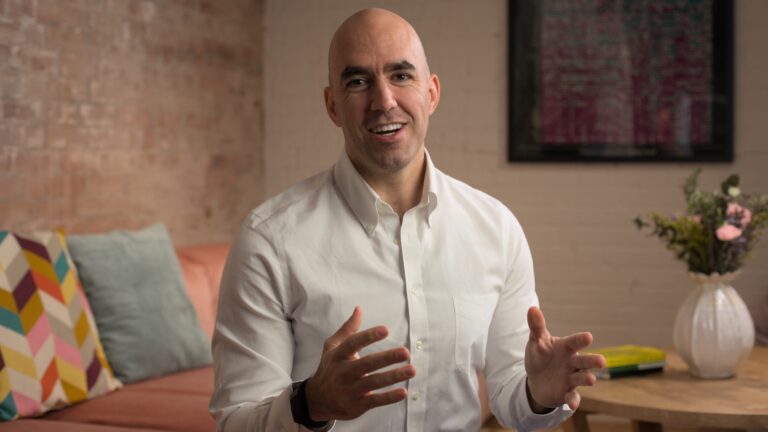Season 5: Innovating for impact
Exploring tomorrow: understanding the ‘Futures Wheel’

“The future depends on what you do today.”
Mahatma Gandhi
In a world where change is constant and uncertainty looms, navigating the future can be daunting – especially for small or medium-sized businesses.
But fear not, the ‘Futures Wheel’ is here to guide us through the web of possibilities, helping us map out the implications of trends or changes, and empowering us to make informed decisions about the future of a business.
Understanding the ‘Futures Wheel’
The ‘Futures Wheel’ is a popular tool used in futures studies and strategic planning. It was developed by Jerome C. Glenn of the Millennium Project to help individuals and organisations explore the potential consequences of a particular trend, innovation or decision.
At its core, the ‘Futures Wheel’ is a visual diagram that resembles a spider web, with the central trend or innovation at the center and successive layers radiating outward like spokes on a wheel. Each layer represents a set of impacts or consequences, from the immediate effects captured around the inner wheel to the long-term implications on the outer.
Using this tool, you will be able to map the first-order effects of a single change, or even map the second-order, third-order and fourth-order effects to help you gain a deeper understanding of the complex interconnections shaping your business.
Using the ‘Futures Wheel’ for innovation
TRY THIS:
Let’s dive into a practical exercise to demonstrate how the futures wheel works. In this example, we’ll explore the future of taxi transportation, and focus on the expected future adoption of autonomous vehicles (AV). Here’s a blank ‘Futures Wheel’ that I’ve recreated based on those of Jerome C. Glenn so you can see what I mean:

Brainstorm immediate implications:
By yourself or with some colleagues or friends, brainstorm the effects of this trend. Try to list the immediate implications of AV adoption. These might include reduced accidents, increased efficiency, changes in employment for drivers and new regulatory challenges. Capture these as spokes coming off the central circle and draw circles around each implication.
Expand to secondary implications:
From each immediate implication, branch out further to identify secondary implications. For example, reduced accidents could lead to lower insurance premiums, while changes in employment might result in the need for retraining programs. Create spokes that come off each of the implications and create more and more smaller circles moving outwards from the centre.
Explore tertiary implications:
Continue this process, delving deeper into tertiary implications. Consider the broader societal impacts, such as changes in urban planning, shifts in consumer behavior, implications for public transportation systems and effects on the environment.
Challenge your own assumptions:
Try to challenge your own assumptions and consider lower probability events or effects, as well as the more obvious ones. Whilst less likely, they sometimes have a greater impact in the event they do happen. For example, cybersecurity threats, misinformation or ethical dilemmas can all have very dramatic consequences. If you’re struggling to think of some, why not ask ChatGPT to suggest a few?
Take time to reflect:
Once the futures wheel is complete, take a step back to reflect on the interconnected web of implications. What patterns emerge? Are there unexpected consequences or blind spots that warrant further exploration? What surprised you? What have you missed?
Here’s a ‘Futures Wheel’ that I’ve partially completed to give you a better idea of thought process, ideas and emerging patterns. Yours will likely look quite different but I hope this gives you a good starting point:

The ‘Futures Wheel’ is a valuable tool for understanding the multi-faceted nature of change and anticipating the challenges and opportunities that lie ahead. By systematically mapping out the implications of trends and trend effects, we can better prepare ourselves to navigate an uncertain future with clarity and foresight.
TRY THIS:
Now think about the implications for your own business.
Identify the central trend, for example “artificial intelligence as assistance”. Write that in the center of a large sheet of paper or whiteboard. This trend will serve as the focal point of your ‘Futures Wheel’. Draw a circle around it. And begin the wheel…
I hope you can use this simple yet powerful tool to help explore the likely futures of your business, sector or industry any time you want – and have some fun along the way.
So, that completes my masterclass ‘Your Innovative Future’. I hope you’ve found it useful and thank you so much for joining me.





Leave a comment